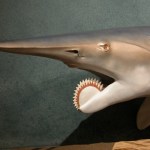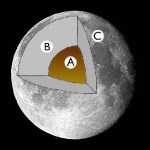monster
Join us TODAY- Tuesday October 29th at 5:30 EST, for our very first Google Hangout on Air! In preparation of our "Science in Fiction" Kavli Video Science Contest launch (Nov. 1) we are hosting a "Science of Monsters" Hangout! We have recruited an incredibly talented team of zombie and monster experts that have graciously dedicated their time to participate in the Hangout.
With Halloween just days away, enjoy our spirited live Hangout on Air by listening to our experts tackle questions like "Why are zombies hungry all of the time? What regions of the brain change in the fictional zombie…
The fear mongers over at National Geographic are at it again. They have released what they claim to be actual prehistoric photographs of nightmarish creatures. Just think of your most feared animal and combine it with either a cooking utensil or a wood shop tool. That might give you an idea of how National Geographic came up with these things.
The CraftsMan-Eating Shark, known for its ability to sever the limbs of its victims with a straight or beveled cut.
I smell "evolution" and I don't like it.
I came up with one of my own:
check out the rest here.
When doctors opened the skull of a 3-day old from Colorado Springs to remove what they thought was a brain tumor, they were surprised to find a collection of organized body parts—including two small feet, a partial hand and intestines. "This was the most well-organized 'tumor' I've ever heard of," said ScienceBlogger PZ Myers, who discusses similar cases of developmental abnormalities on his blog, Pharyngula.
We're gonna need a bigger canoe...
This is not a hoax. This monstrous Chinook Salmon was found dead in a shallow stream by the California Department of Fish and Game.
Biologist Doug Killam discovered this angler's dream during a survey of salmon that had recently spawned in Battle Creek, California. "I have counted tens of thousands of salmon during my career, and this is the biggest I have ever seen." It better freakin' be. The previous record holder was an 88lb-er although this beasty's weight was not provided in DPFG's press release.
Because Pacific Chinook salmon die after spawning,…
Sometimes, you find weird stuff on the internet. But sometimes you find even weirder stuff in scientific journals. To what do I refer? A paper in the Journal of Mathematical Geology back in 2000 entitled Godzilla from a Zoological Perspective, by Per Christiansen.
This was written as a critique of the "new Godzilla" movie, arguing that it is not more biologically plausible than the "old Godzilla" of 1954.
However, calculations show that his limbs and limb muscles must have been severely undersized to move his huge bulk around at even a leisurely pace, and most other biological problems with…
But I didn't want one! Stop your whining, Earthlings. We have a serious question to answer, courtesy of Tamara:
What’s the moon like below its surface, moving into the interior? And what’s the current thought on its formation?
Well, we do know a lot about the Moon's insides the same way we know about the Earth's; just like the Earth has earthquakes, the Moon has moonquakes. These tell us about the Moon's interior. From back when we landed on the Moon, we planted the Apollo seismic experiments and saw 28 moonquakes. From these, we learned that the Moon has a crust about 60 km deep, a deep…
Scientists have created a jellyfish with twelve heads in a lab at Hanover University of Veterinary Medicine in Germany. Bernd Schierwater and colleague Wolfgang Jakob (or "God" as they like to collectively call themselves) claim to have created the freakish monstrosity to study how colonies of multiheaded organisms develop in nature. By manipulating certain Cnox genes, a specific kind of gene which helps control how the bodies of jellyfish embryos form, Schierwater and Jakob caused the embryo to develop in strange ways. Simply by inhibiting the Cnox-2 gene, up to twelve heads would form. The…
A new book, "The Deep: The Extraordinary Creatures of the Abyss" by Claire Nouvian, a French journalist and film director, reveals haunting images of some of the most bizarre creatures on the globe, ones that live in the deepest parts of the ocean. In many cases the creatures- some of which were photographed as far down as four miles- have never been recorded on film before, and some are still unidentified. The fantastic book contains 220 photographs and scientific information about the living conditions of life miles below the surface.
Speculating in the book, Craig M. Young of the Oregon…
"This bounty hunter is my kind of scum: fearless and inventive." Cane toad, Bufo marinus
The environmental group, Frogwatch, caught one of the largest specimens of toad ever discovered in Darwin, Australia on Tuesday. The apprehended toad is the size of a football and as heavy as a small sack of potatoes.
Cane toads are a highly poisonous, non-native species in Australia and have been wreaking havoc on the local ecosystem for decades. Frogwatch's "Toad Buster" project launches "raids" on small ponds, blinds the toads with bright lights and nets them by the dozens. From there they are killed…



